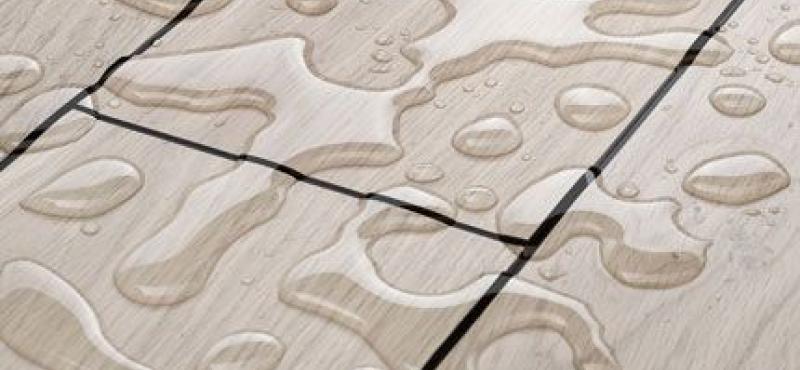
If you’re the owner of a wooden floor and are thinking about making it waterproof, you need to consider two important factors. Firstly, think if what you want is a floor that actually is “water-proof” or if you simply want to make your flooring more water-resistant. And secondly, you will need to decide on how to do it.
“Waterproof” and “water-resistant” are two different things and you obviously achieve these two effects using various methods. Usually, wooden floors with a finish are equipped with some sort of water-resistance, which is built-in. Yet, varnished or lacquered flooring is in most cases more water resistant as compared to an oil-finished floor. Taking all that into account, if you want to make wooden floors in your house “water-proof”, it will require not only time, but also considerable effort.
Noticeably, there are a few products available on the market which can protect your flooring from water, but you need to decide on the end result you want to achieve and determine what your expectations as regards waterproofing are – only then can you choose the right one. You may, for instance, want to be sure that several wet footsteps when walking from the bathtub to a towel rail will be safe and won’t cause any damage to your floor. Or you may think about waterproofing wood flooring in a room that you’re planning to convert to a wet room. These two situations are totally different and thus they obviously require a different approach.
Ensuring that your flooring will withstand some moisture coming from underneath your shoes when you come in from the outdoors or wet feet when you walk across a bathroom is quite easy and involves the following steps.
PREPARE THE FLOOR
Preparing a wooden floor for application of a waterproofing product entails clearing the room, carefully cleaning the floor and then repairing any damage that has occurred over time.
SAND IT
When sanding the floor, it’s crucial to devote enough time to the sanding process, which will help you achieve a good end result. When sanding the floor, start with the edges using a coarse-grade sandpaper and move down to a finer-grade. When you’re done with the sanding process, clean and vacuum the floor once again.

APPLY WATERPROOFING
Now comes the time for applying a waterproofing product of your choice. All waterproofing products have full manufacturer’s instructions and it’s crucial to stick to them at all times. But, in general you will need to apply at least three layers of waterproofing polyurethane or resin. Remember that each coat needs to dry thoroughly before you start applying the next one. In between coats, inspect the floor, looking for any bubbles or wrinkles and sand them away, prior to applying the next coat. When you start the process, it’s advisable to use a natural fabric mop, which will ensure a good coverage and use a brush at the end, which will help you achieve a nice even finish.
OUR TOP TIPS
Firstly, remember to choose a warm, dry day for a job like this – in this way your flooring will have a good chance of drying quickly and evenly. And secondly, when applying the finish, remember to move towards the door, or else you may get stuck somewhere in the middle of the room and end up having to walk across it, thwarting all your efforts.
PLEASE NOTE
Always try to remove spills and avoid flooding of the floor at all costs, as such situations can cause serious damage to the floor – regardless of how precisely you apply a waterproofing product to the floor or what the manufacturer claims.
| Mon-Fri | 8:00AM – 5:00PM |
| Saturday | 10:00AM – 4:00PM |
| Sunday | 11:00AM – 3:00PM |





.svg)
.svg)